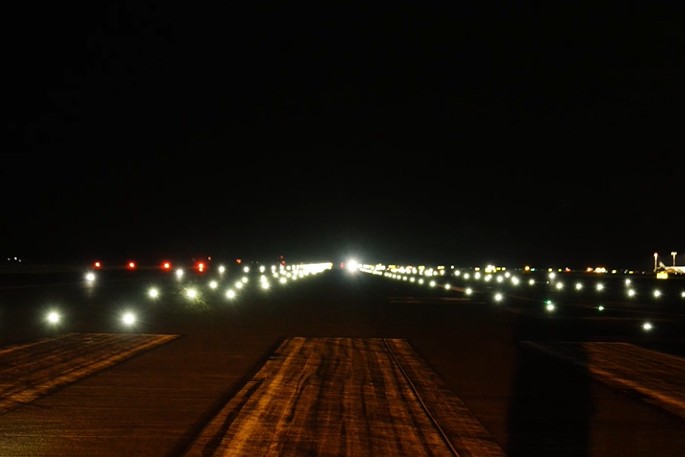This Content Is Only For Subscribers
Auckland Airport’s runway is being seen in a whole new light with a switch to LED runway lights to guide aircraft during take-off and landing.
Shining bright down the length of the 3.6km runway, around 600 light-emitting diode lights, have replaced a halogen lamp system – work all done under the cover of darkness.
Auckland Airport chief infrastructure officer Susana Fueyo Suarez says the new runway lights are a brilliant outcome after months of work undertaken during the short, twice-weekly runway maintenance closures.
“It’s a real milestone in a programme of work to upgrade all the lights across our entire airfield. Not only was the runway lighting conversion a project that requires a high degree of technical skill, but the physical work can only be done in the early hours of the morning, between 1.30am and 4.30am on Saturday and Monday when the runway closes for maintenance.
“This is the only time we have no scheduled flights at Auckland Airport, and it means the project team must be highly organised – ready to go after the final flight arrival or departure and completely clear of the runway when it reopens a few short hours later,” she says.
“It’s a real credit to the planning and work put in by the engineering and installation teams that we now have the full runway powered up with the new lights – ready to shine bright for the decades to come,” Susana says.
The work doesn’t stop there.
The 240 new LED in-ground runway centreline, 186 touchdown zone, 52 threshold, 124 runway edge and 18 runway end lights now in place will be individually tracked and monitored with all details digitally recorded.
Every couple of weeks fittings are checked with a torque wrench to ensure the bolts holding them in place are locked tight, the lenses are cleaned using compressed air and a baking soda mixture to clean off the rubber marks from aircraft tyres that quickly builds up, and brightness tested.
“From the moment an LED light is installed we have a full record of its performance – including a complete log of every time it is cleaned or the bolts tightened through to any maintenance done. These are all important for ensuring the airfield’s operational efficiency, reliability and its safety,” Susana says.
“Runway lights are vital for keeping aircraft moving safely, no matter the time of day or weather. The new LED lights and the systems we have put around the lighting system to keep it running smoothly are critical for achieving that level of reliability.”
With the runway conversion to LED lights now complete, the upgrade programme now focuses on the thousands of halogen lights across the rest of the airfield, including taxiways, the apron and aircraft stands (parking spaces for planes), with a replacement programme phased over the next 10 years.
Powering down energy use
As well as the safety benefits, the LED lighting contributes towards Auckland Airport’s strategy of investing in low carbon options as part of its infrastructure renewal programme.
The LED lighting burns bright using up to 70 per cent less energy and has a longer life expectancy (at 75,000 hours) when compared to tungsten halogen lamps (5000 hours).
“Not only do the new lights use less energy, being more durable leads to less waste and fewer maintenance hours to keep them operating,” says Susana.
Alongside the lighting upgrade, a new power centre is under construction at the western end of the airfield replacing a power centre dating back to the airport’s construction in the 1960s. Set for completion late next year, the new power centre not only adds resilience but will support the expansion of the airfield to the north of the international terminal, and longer-term, links to a future cargo precinct and second runway.
“Every time we’re upgrading our infrastructure, we’re not only ensuring we are resilient and ready for today but are making sure we’re bringing improvements that will benefit us for decades to come,” Susana says.



